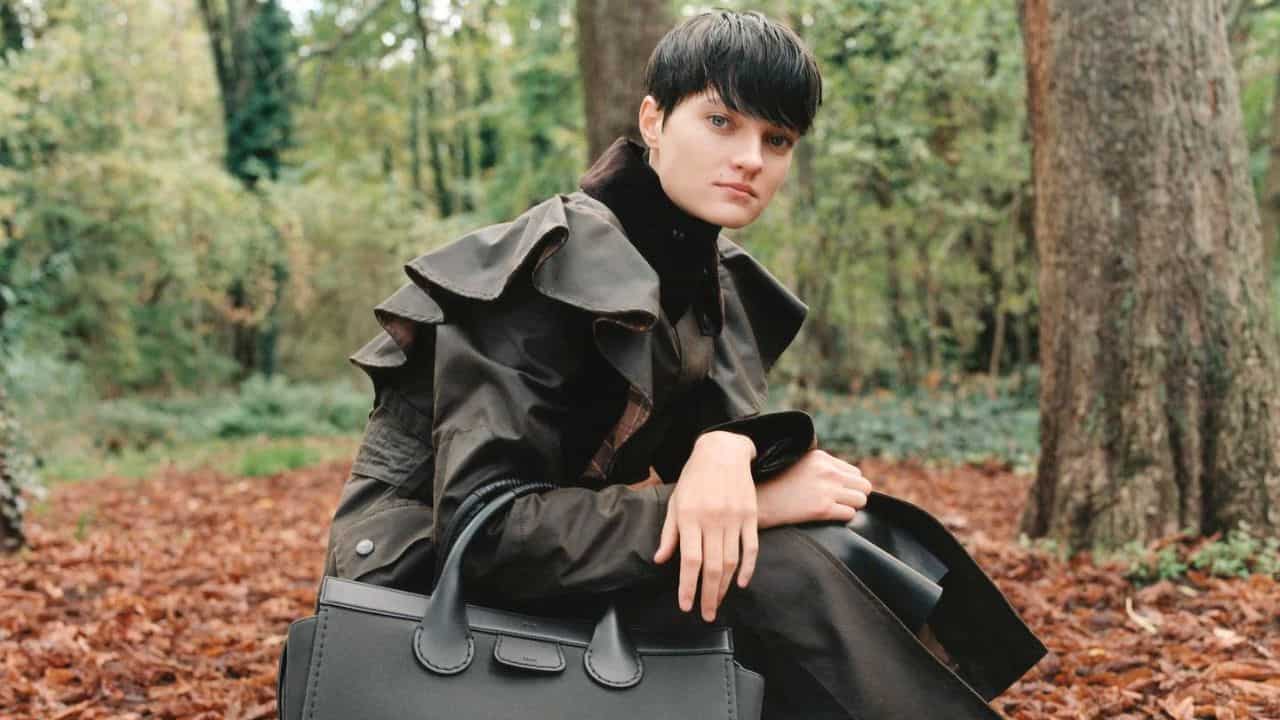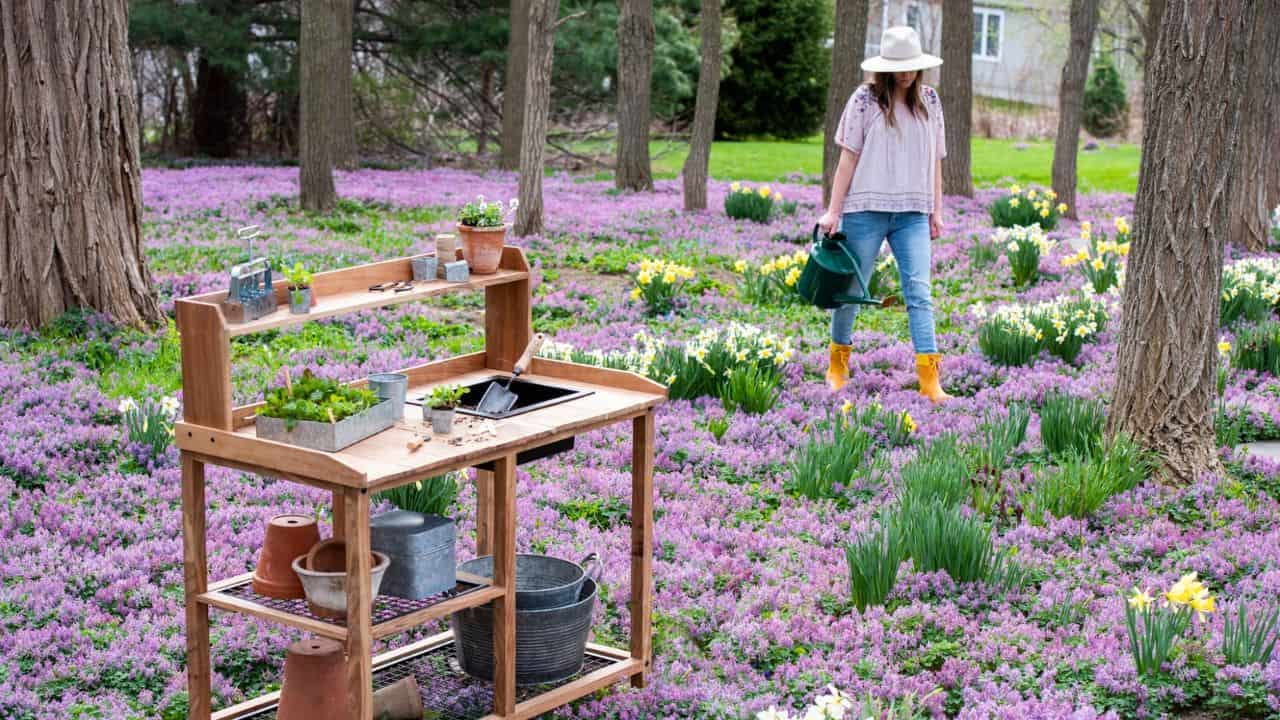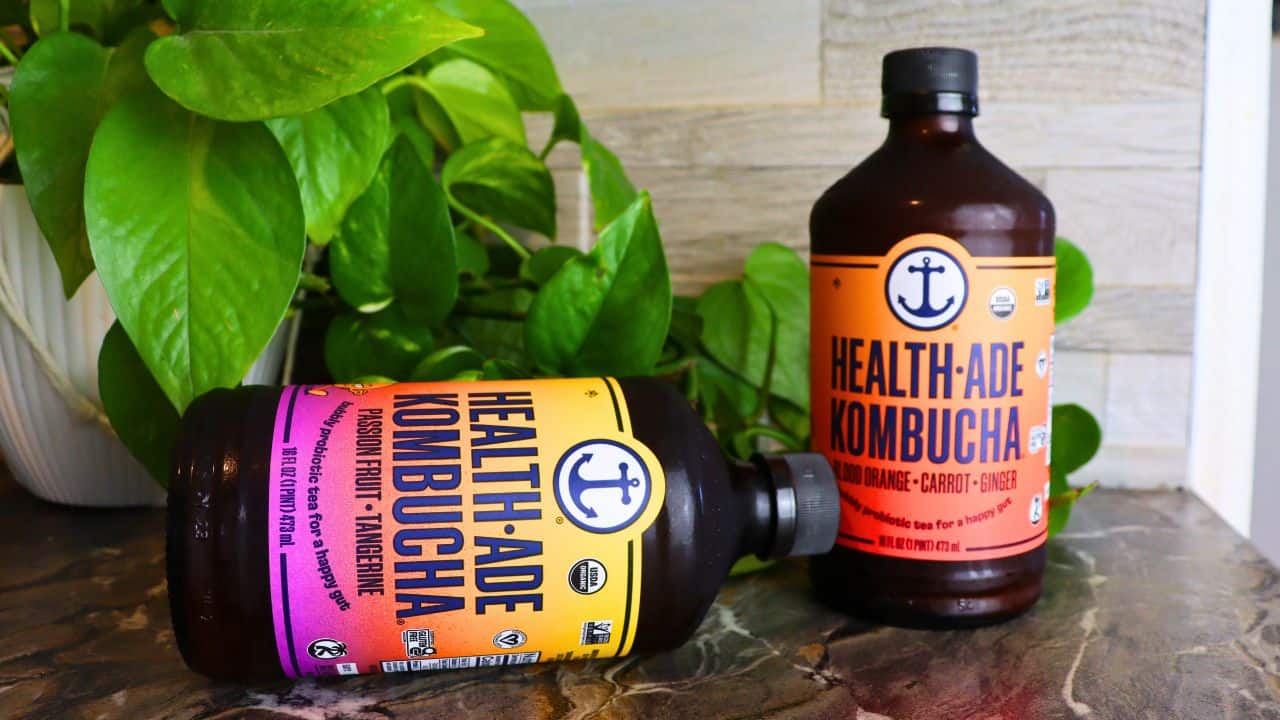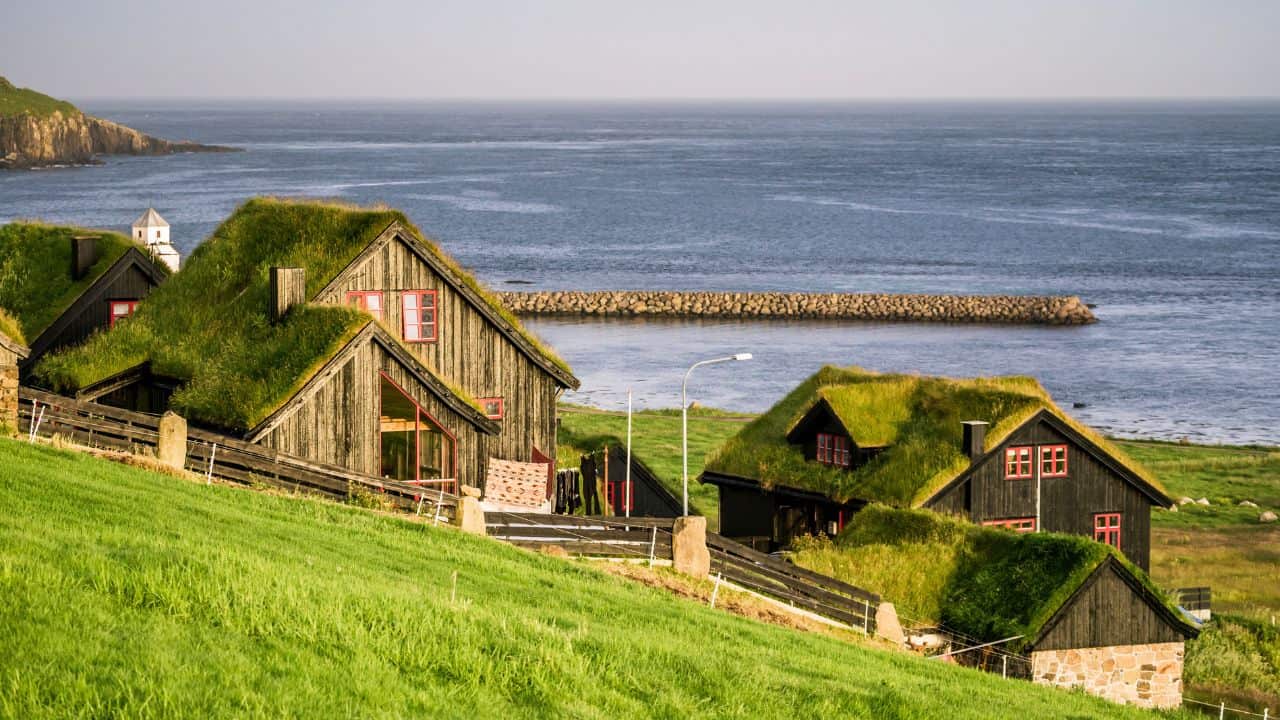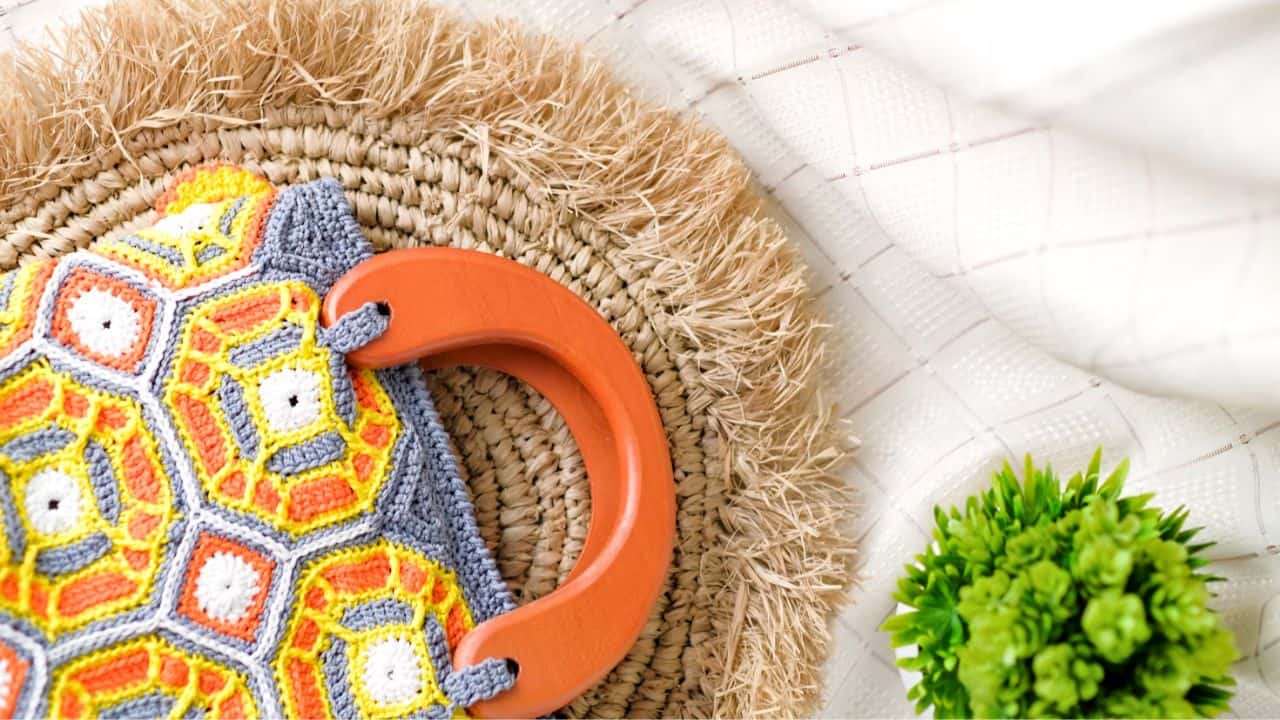It’s about the bigger picture – say two men, in two glens, over two days in the Scottish Highlands.
At Alladale Wilderness Reserve, 90 minutes north of Inverness in the north east of Scotland, plans are being explained.
Laid nearly 20 years ago, the ‘vision’ to bring back the Highland forest cover across this remote 23,000 acre site, shift away from deer stalking with a rifle to with a camera and kickstart the flagging biodiversity by introducing wild cats is if not coming to fruition, then it’s maturing so evidence and reward can be seen.
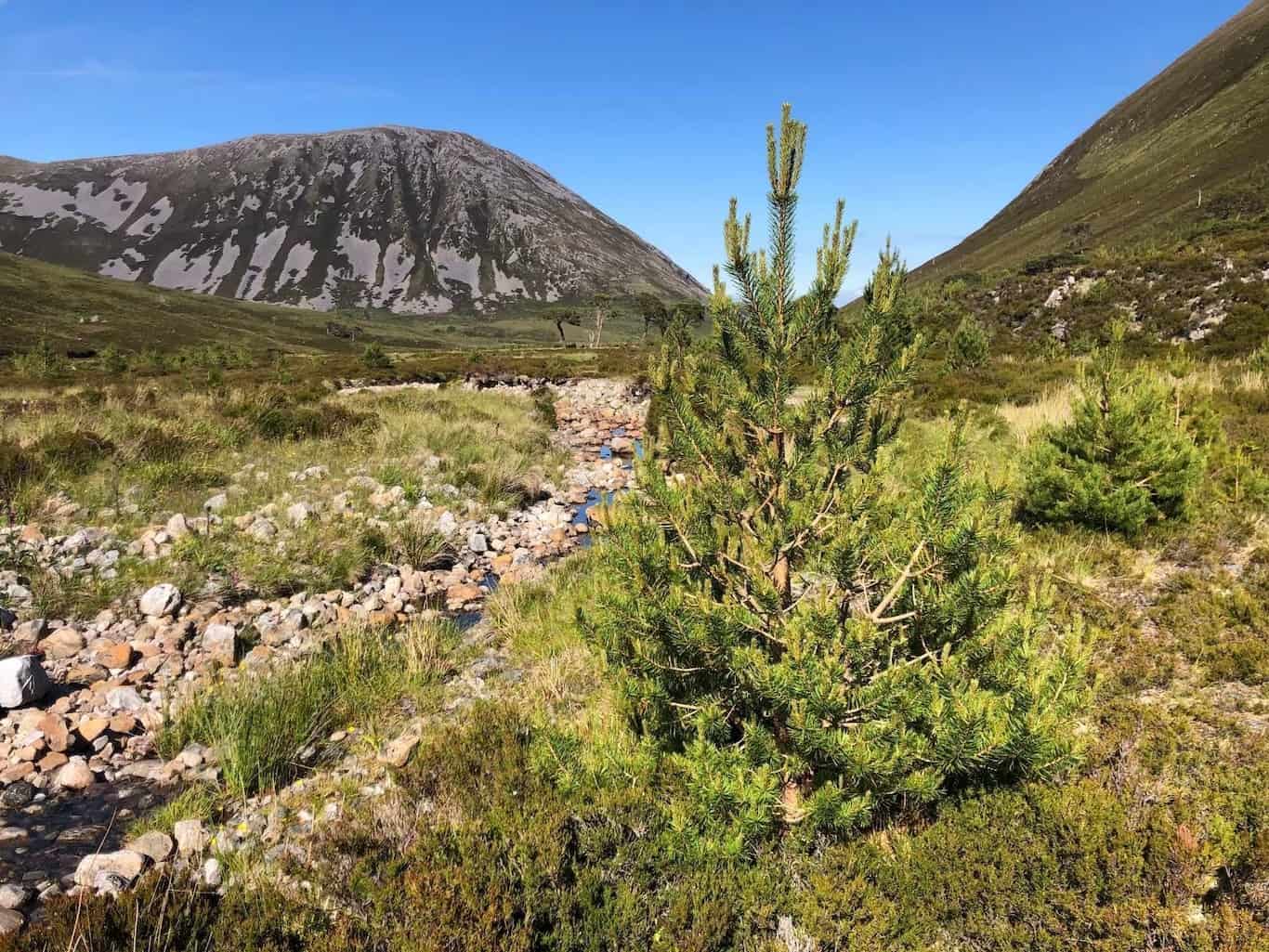
Over 48 hours in Glen Mor and Glen Alladale, hosted by Paul Lister and his passionate, no-nonsense reserve manager Innes Macneill, Alladale’s past, present and future, the micro and the macro, splurge and combine, back and forth like a pair of binoculars trying to get the future into focus.
Scotland’s highlands are relatively barren for trees, thanks to several centuries of logging, inflated deer populations (who eat young tree saplings for breakfast) and humanity’s canny knack of knocking eco-systems off balance.
But balance is what Lister and Macneill are trying to restore in this creme de la creme experience of the Scottish Highlands (Alladale was voted Best of the World: 6 Places To Rediscover Nature By National Geographic).
At the macro level is the MFI heir-philanthropist who operates in a cluster of countries, funding conservation projects under his The European Nature Trust (TENT) and producing documentaries that bring attention to keystone species which we need to introduce back into our landscapes – like wolves but beavers.
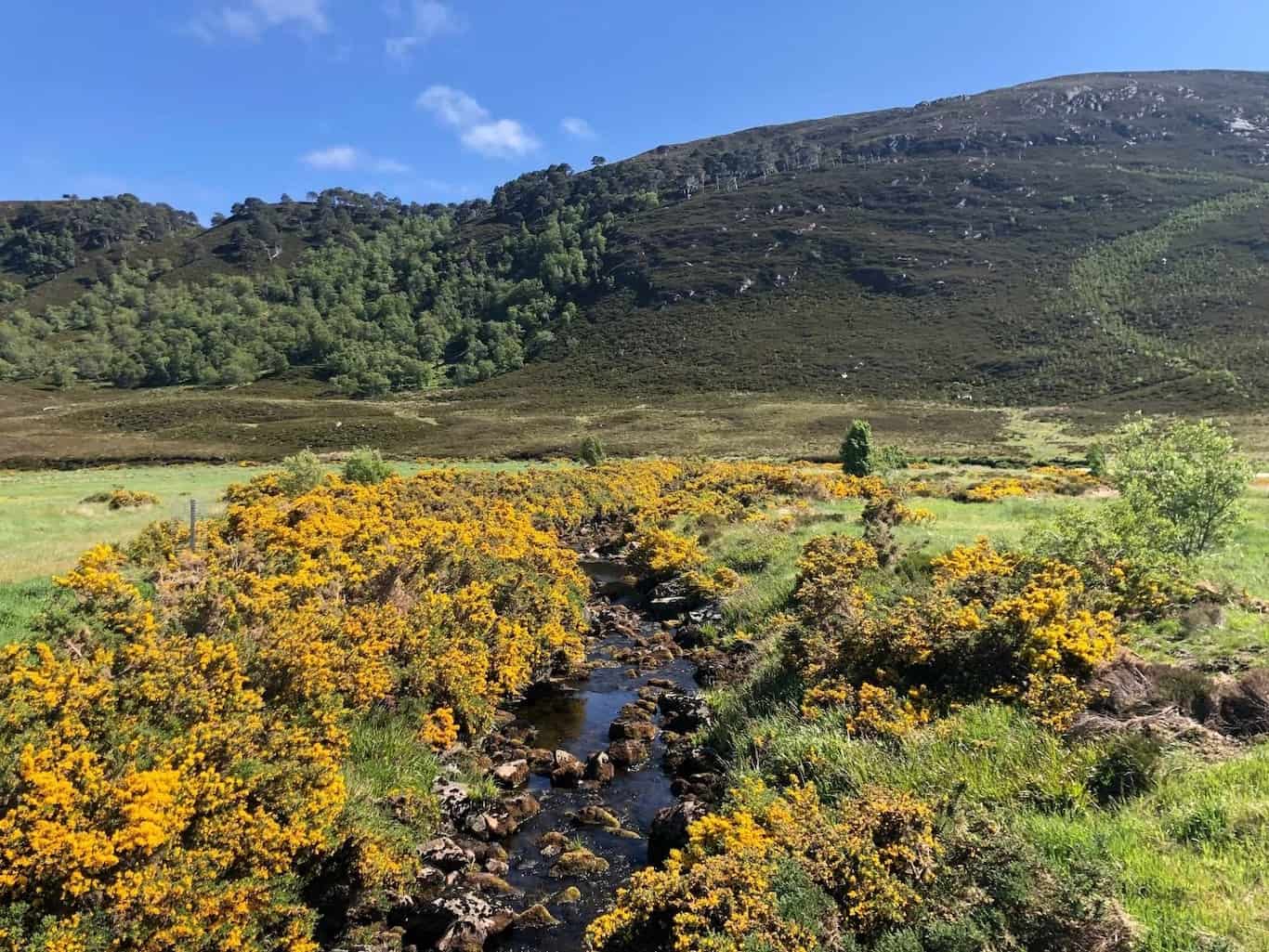
Back down on ground level, Innes, is in charge of tree planting on a mass scale, with waves of willow, rowan, oak aspen and others deployed across the slopes of one area of the reserve, which has been fenced off to stop the branch-happy deer from undoing a decade and a half of work.
“It’s been frustrating showing people round before, we’ve planted 100,000s of trees but we’re only just being able to see them. Forests grow slowly and tree planting isn’t a quick game,” says Macneill.
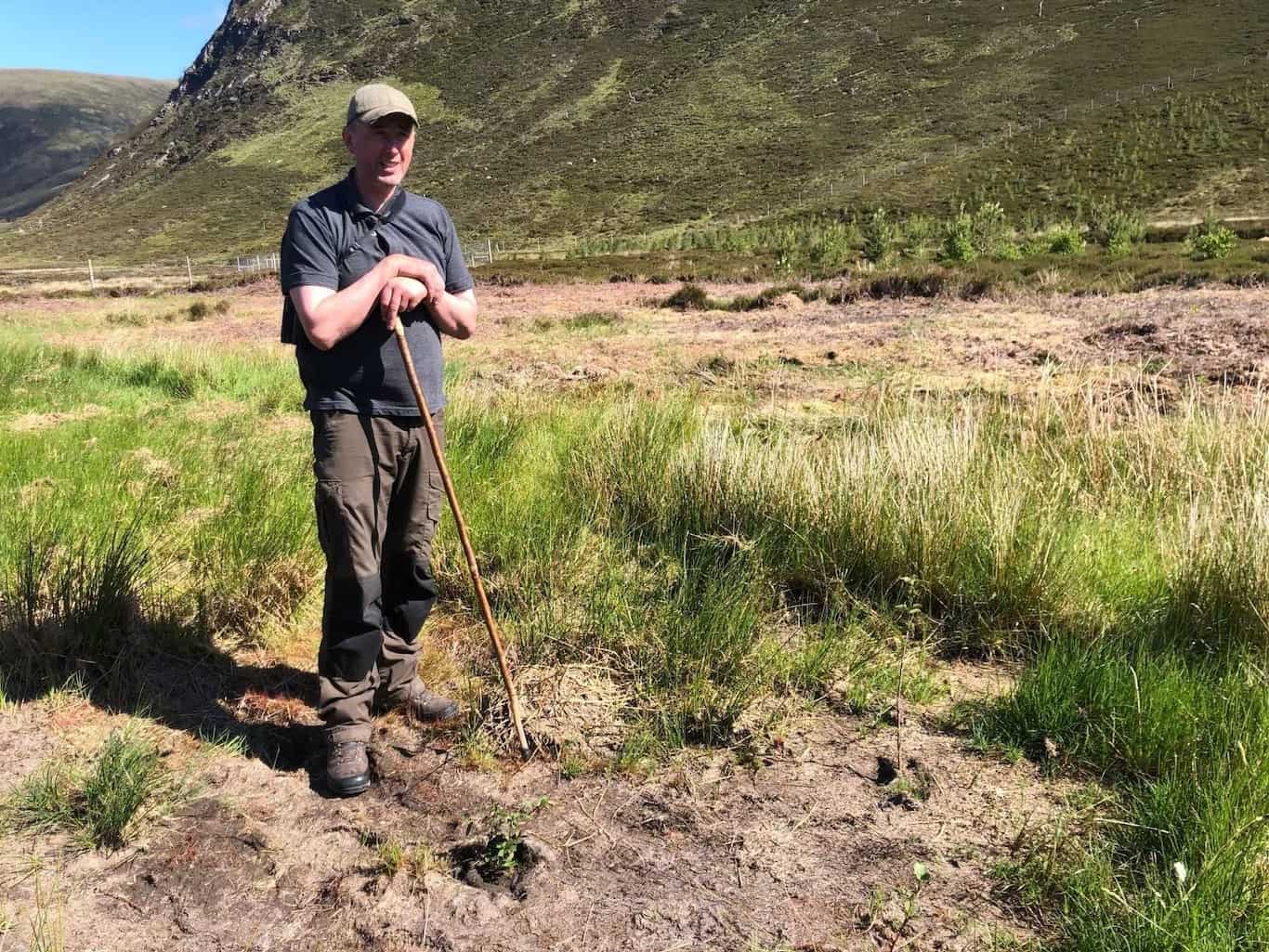
We’ve bounced down tiny rock strewn roads which snake down the thin long glens to follow the river which winds it’s way pleasingly between the two hills, (and from the top of which you can see both Scottish coasts at once).
I gaze around, handfuls of tiny thin saplings wave obligingly under the unseasonally hot, blue sky, a beautiful but stark reminder of the future that awaits us if we don’t rewild, conserve and reverse our impact on the landscape.
The young trees – already nearly 20 years old and only a couple of feet high seem impossibly ill equipped to last out here for hundreds of years, they are vulnerable, like grey pencil marks on a lush oil painting.
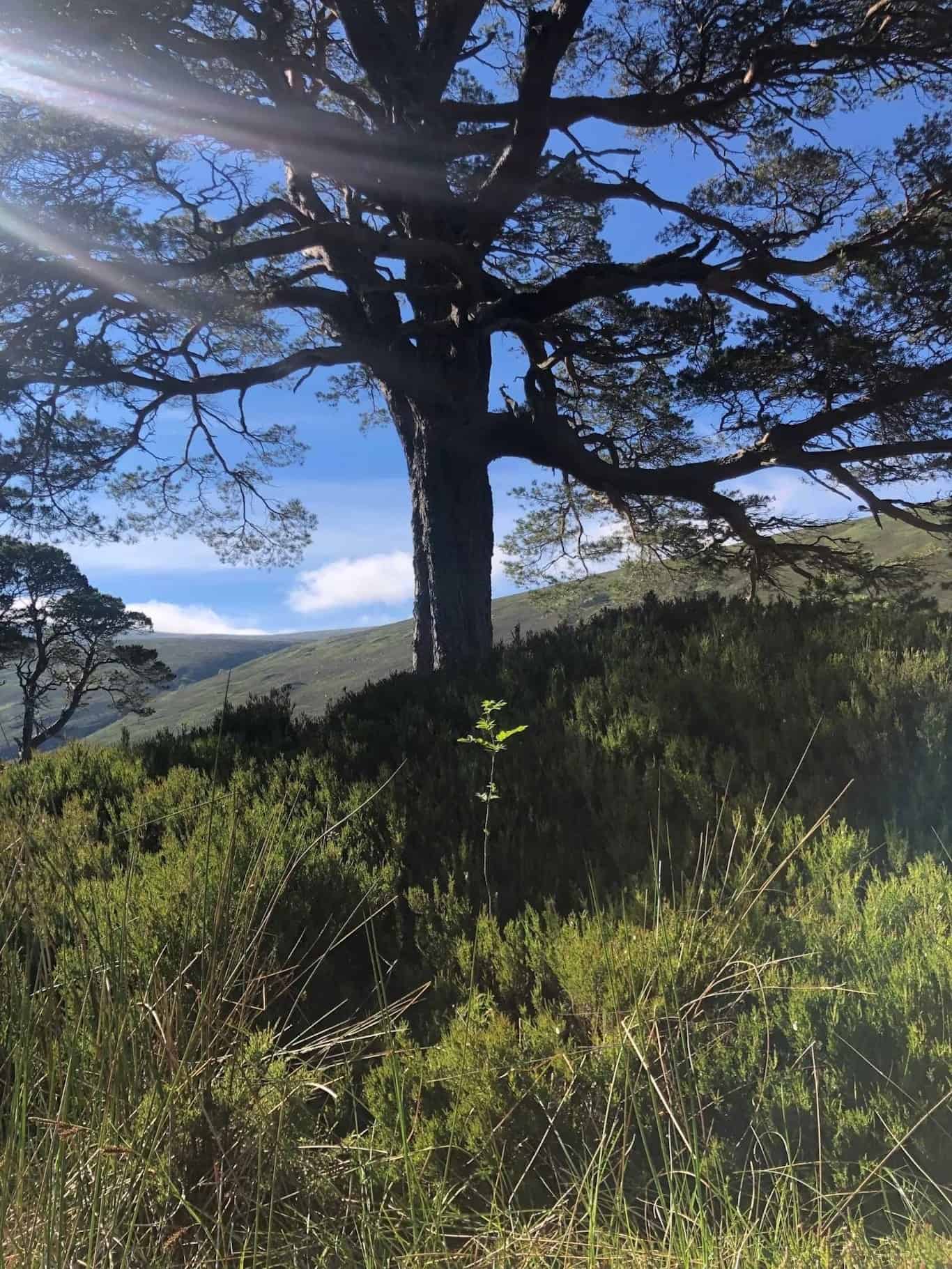
“The young trees…seem impossibly ill equipped to last out here for hundreds of years, they are vulnerable, like grey pencil marks on a lush oil painting”
Dotted occasionally in the scree and on the ridgeline are gnarled old Scots Pine – ‘granny pines’, gnarled, wizened and bent over – some more than 400 years and spent – unable to regenerate or provide seeds any longer, relics from a lost time.
We will become like them if we don’t act.
They are all that is left of a once rich forest, and without the trees – thick bracken and Scotland’s iconic gorse and heather has taken over.
Pretty to look at, but impossible for light and wind to get to ground level to help tree seeds germinate and grow.
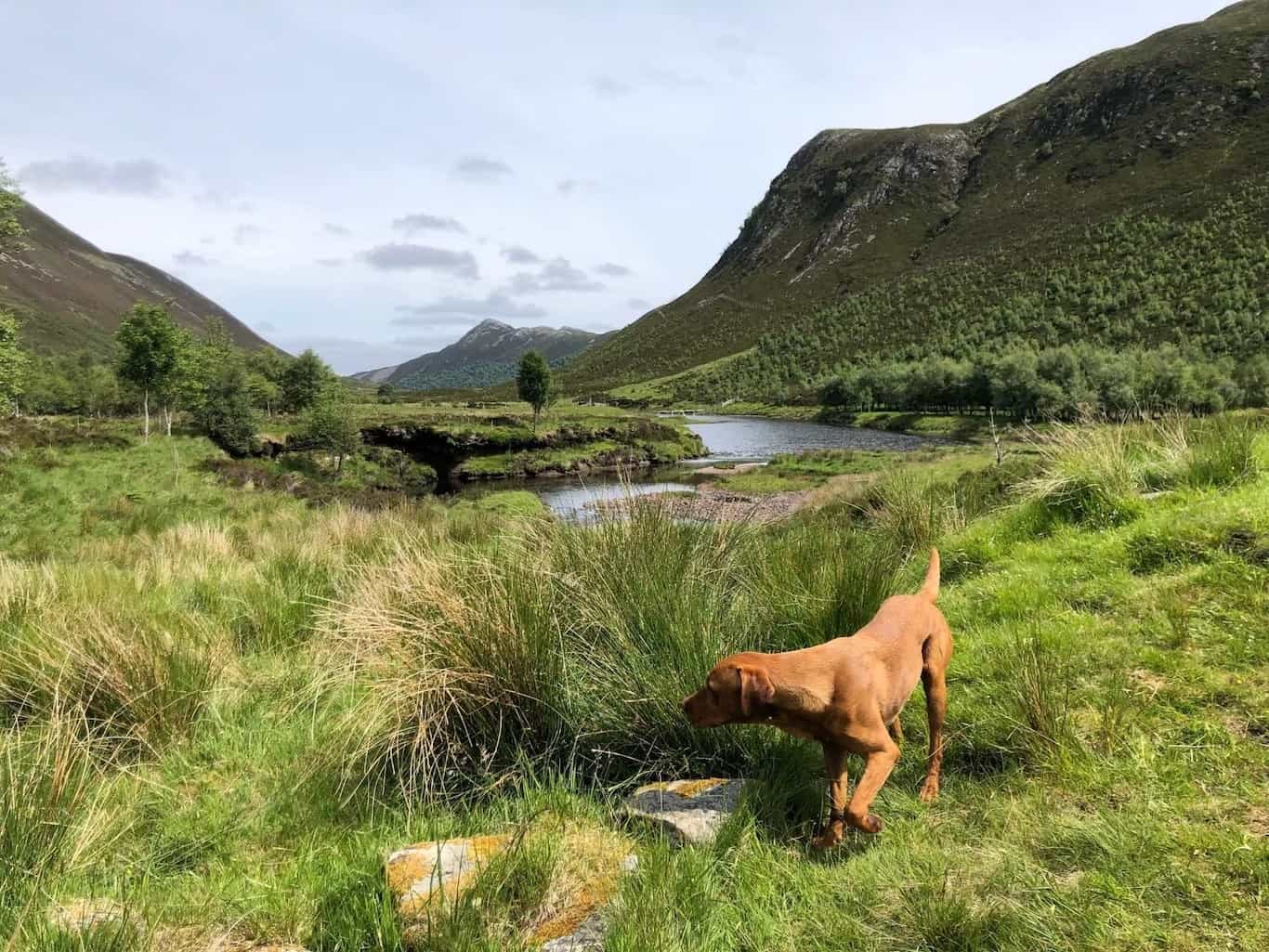
Alladale for all
Alladale Wilderness Reserve isn’t your run of the mill reserve, with a laird lording it up.
Lister has established three self-contained luxury lodges across the two glens (one seriously remote and perfect for getting that book finished), plus there’s the main lodge built in 1887 by former owner Sir Charles Ross.
So far, so Scotland.
But that push and pull of the past and future of this land can be seen throughout the lodge – for example there’s a comprehensive conservation and nature themed library that sits next to an enormous mounted stags head.
But one of the present ways Alladale is of serious interest to conservationists, ecologists and eco-friendly travellers is it’s commitment to sustainable luxury.
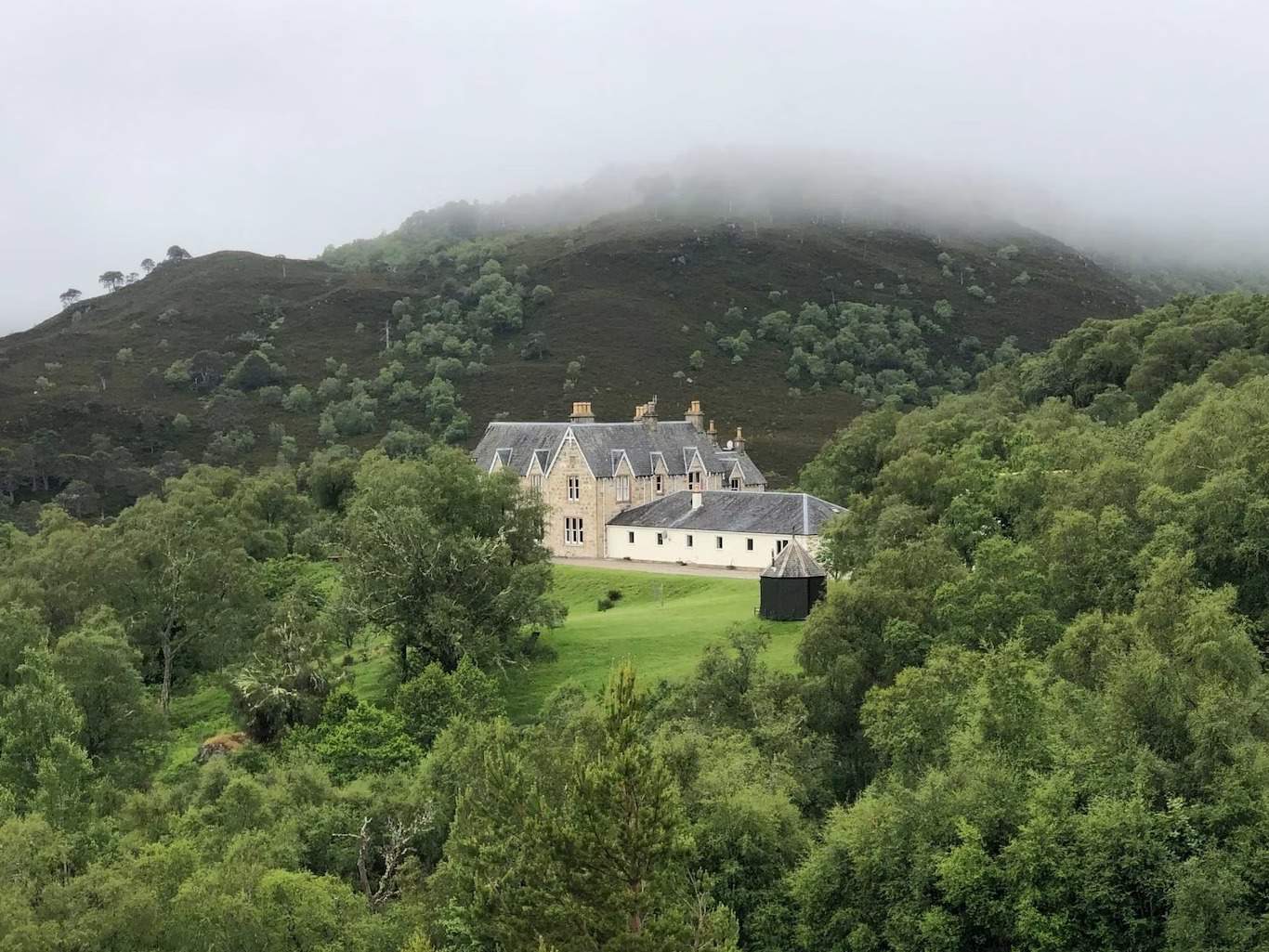
From using mostly hydro power to only serving reserve produced venison and trout at meals (all of the lodges are fully catered), the reserve is impressively light on the land.
Lister, once dismissed by traditional Highlands landowners, has become the pioneer who advises on ‘natural capital’ – valuing the land for the landscape, not the bounties on the antlers of the majestic stags who roam these hills.
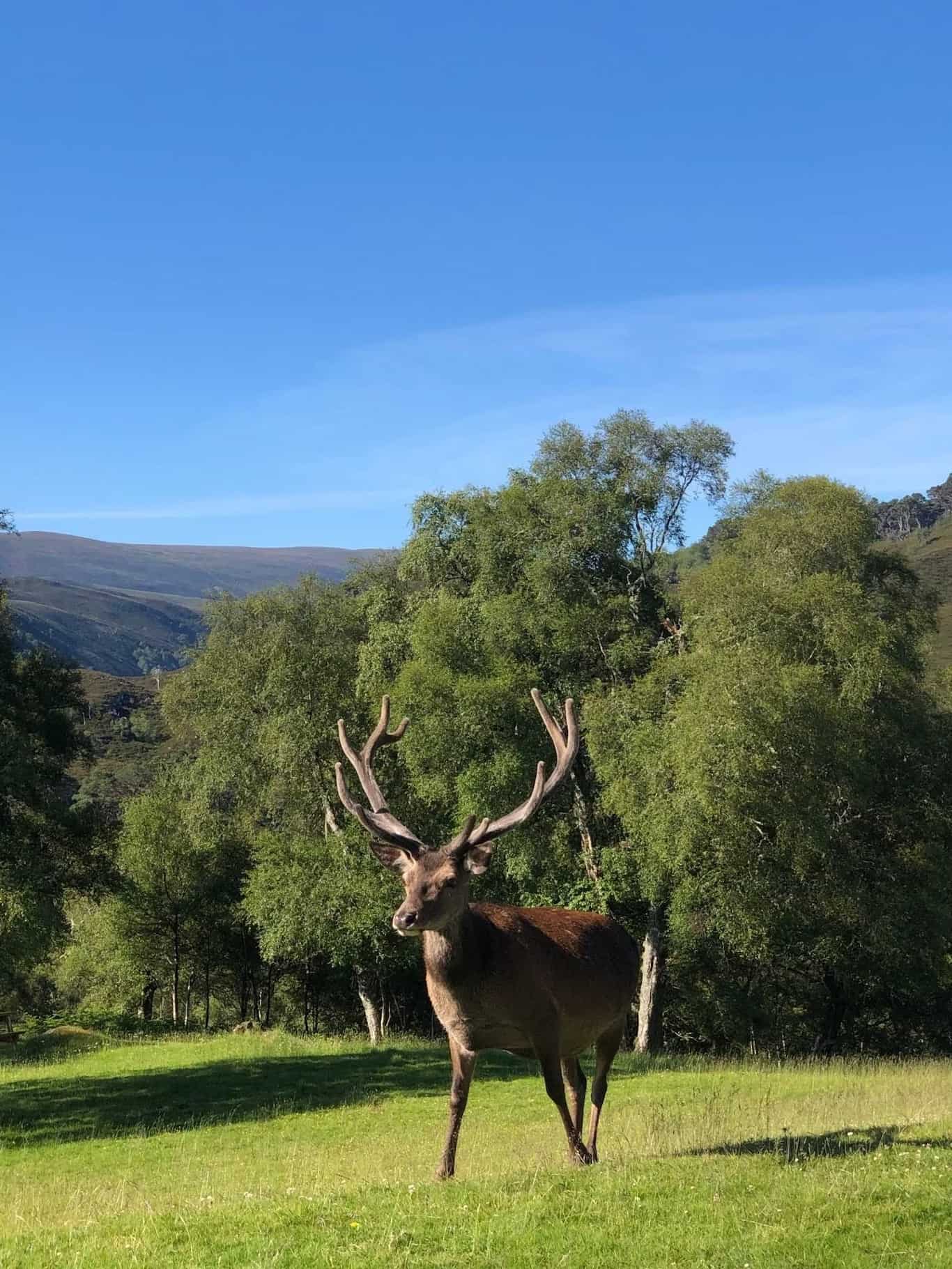
Being mostly self-sufficient in terms of food means making hard choices.
For tree cover to increase (already on 15% up from 5%), the reserve has to regularly cull the deer herd.
Venison is lean, healthy meat, and you can’t get a much smaller carbon footprint when the animal-plate food chain is measured in metres, so venison it is at most meals.
It’s deliciously converted into everything from spag bol to succulent steaks to rival Michelin starred restaurants (where the excess meat is sent including to those owned by Raymond Blanc and the late Albert Roux).
What’s Your Carbon Footprint? Dine Differently for The Planet
You can’t get a much smaller carbon footprint when the animal-plate food chain is measured in metres
Developing this meat as an ethical, regular alternative to chicken, pork and beef is one of Lister’s many ideas, that feed into his ‘bigger picture’ – where thinking differently, finding new solutions and not looking to the past to solve our present issues and doing it all with a sense of urgency, seem to be the driving factor.
And it’s not just venison on offer.
The reserve favours catch and release fishing for guests across 11 trout ponds and lochs, some more than 750 ft above sea level, so the fish served to guests come from an incredible aquaponics gardening system installed in the last year at Alladale.
Aquaponics at Alladale
It’s not just the land, the team here are so keen to repopulate. They’re also looking at reducing the strain of providing food, cutting waste and creating new systems in this part of the Highlands.
A seriously impressive new aquaponics garden has been installed over the last year which now produces everything from salad leaves to root veg via a closed loop system where the nitrates from fish poo are used to nourish and grow plans.
The plants need no further intervention, bedded into clay pellets which are flooded with the waste water in a tidal system. For more on how aquaponics works see here.
That waste then feeds a Scandi-looking kitchen garden which sits outside the solid timber twin greenhouses.
The aquaponics system at Alladale uses just 5% of the water normally used to grow food and even the rainbow trout used in the aquaponics farm (and sourced from Alladale’s lochs) end up on guests’ plates.
As well as feeding staff and guests, the garden will be an education centre for children and adults to learn about aquaponics and hopefully inspire other nearby centres to be built, to provide local jobs and fresh food.
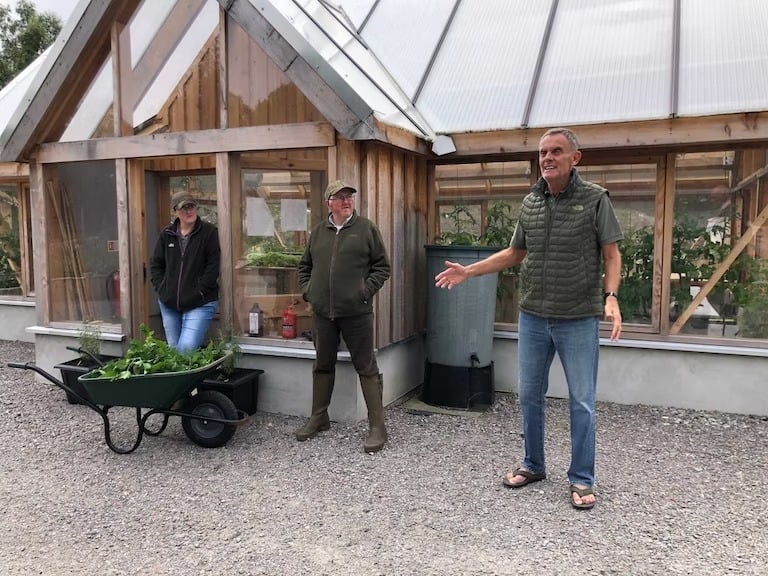
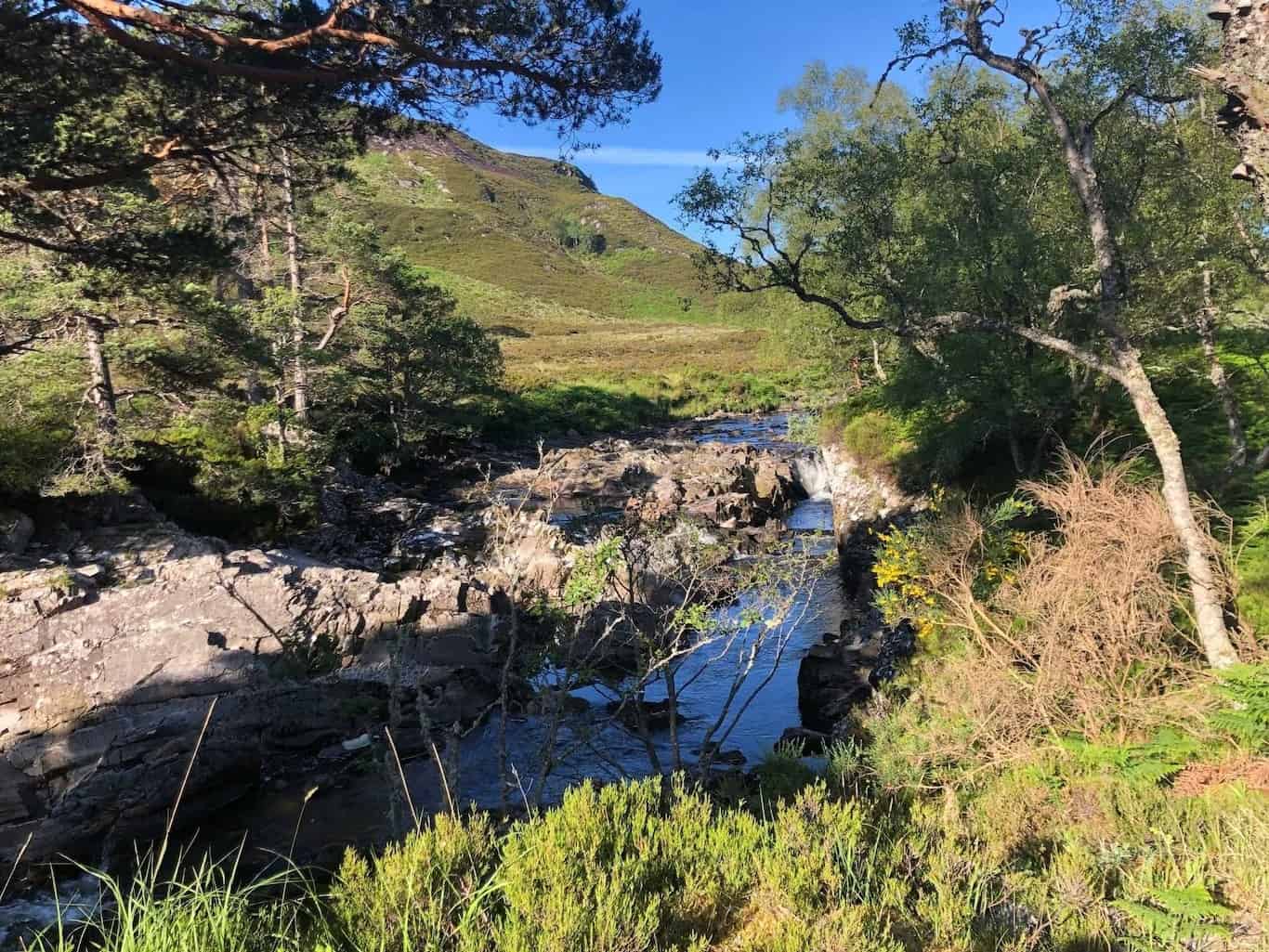
Make no mistake, this is a working reserve where conservation is top of the agenda.
Whether that’s tree planting, wildcat breed and release programmes or aquaponics, guests are welcome to view and learn about whatever issues closest to them but this isn’t a safari and work doesn’t stop for a full house.
What to do at Alladale Wilderness Reserve
Alladale isn’t a cooker cutter experience either.
Guests booking any of the three self-contained, luxury lodges (exclusive basis and at least seven days), will be asked pre-arrival what kind of activites they’re interested in.
Depending on your budget, anything can be arranged, from private whiskey tastings to massages, cooking lessons, foraging or day tour itineraries, which might take in seal spotting on east coast beaches, shopping for Scottish crafts in Dornoch or distillery visiting.
At a macro level it’s difficult to comprehend the size and majesty of the glens, with an eagle soaring overhead, no human habitation visible for miles, no phone signal and the odd cyclist, so my advice would be to go micro.
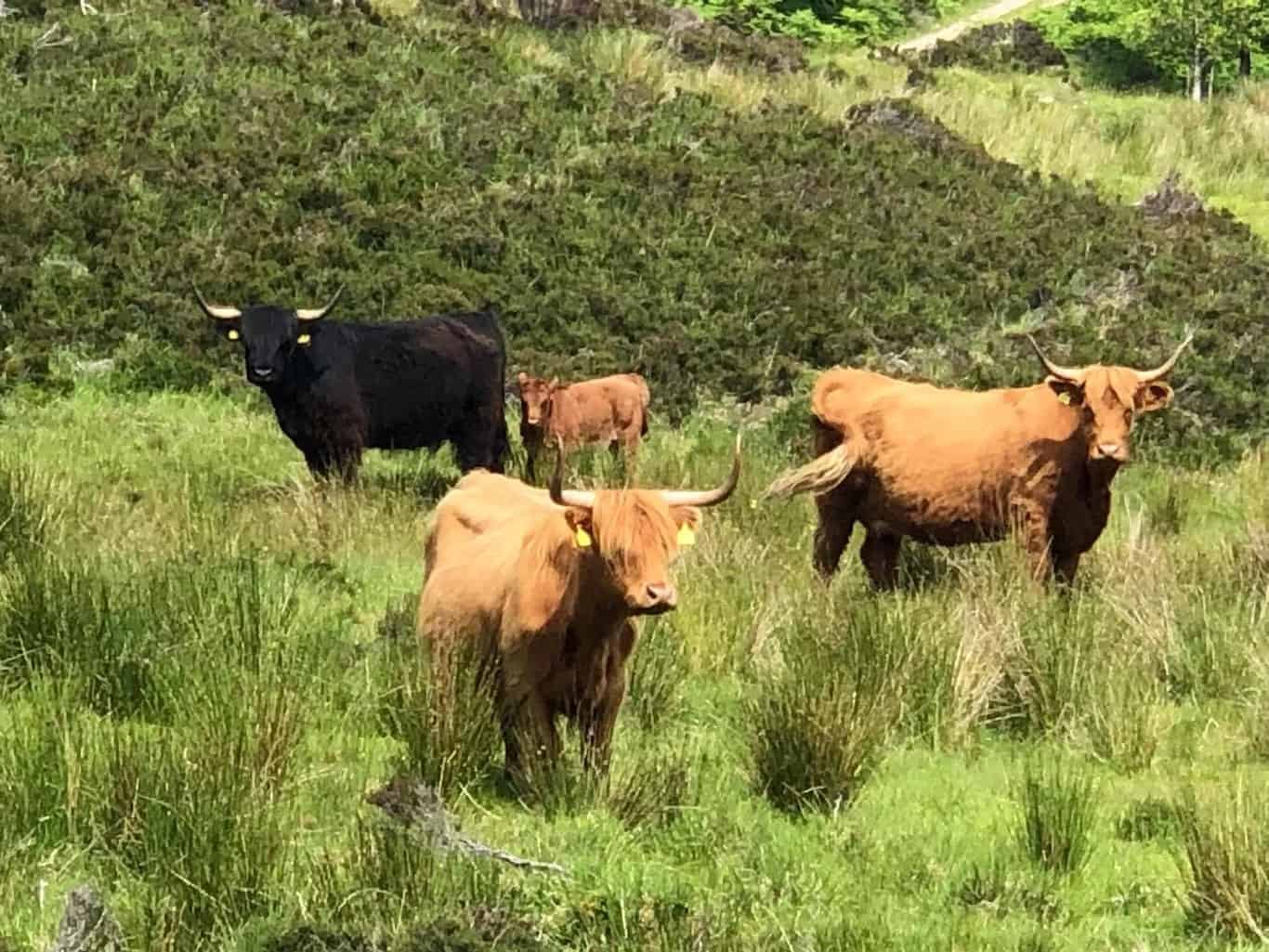
Sit under a tree on the river bank, and let the water rushing over rocks in its hurry downhill, wash away your work stress.
Jump into a cold deep pool of gently swirling water, hidden behind giant, broken paving slabs of rock, first thing in the morning.
Spend time watching the Highland cattle herd, scratch, chew and amble around at the bottom of the valley.
Soak in the myriad shades of green on a slow walk to a turf covered, wood fire warmed hut, overlooking a shallow wide river where salmon spawn.
Or just leisurely sit at a long breakfast, staffed with silver cutlery and strong coffee, lashings of toast in front of you and watch stags sauntering by on the grass outside.
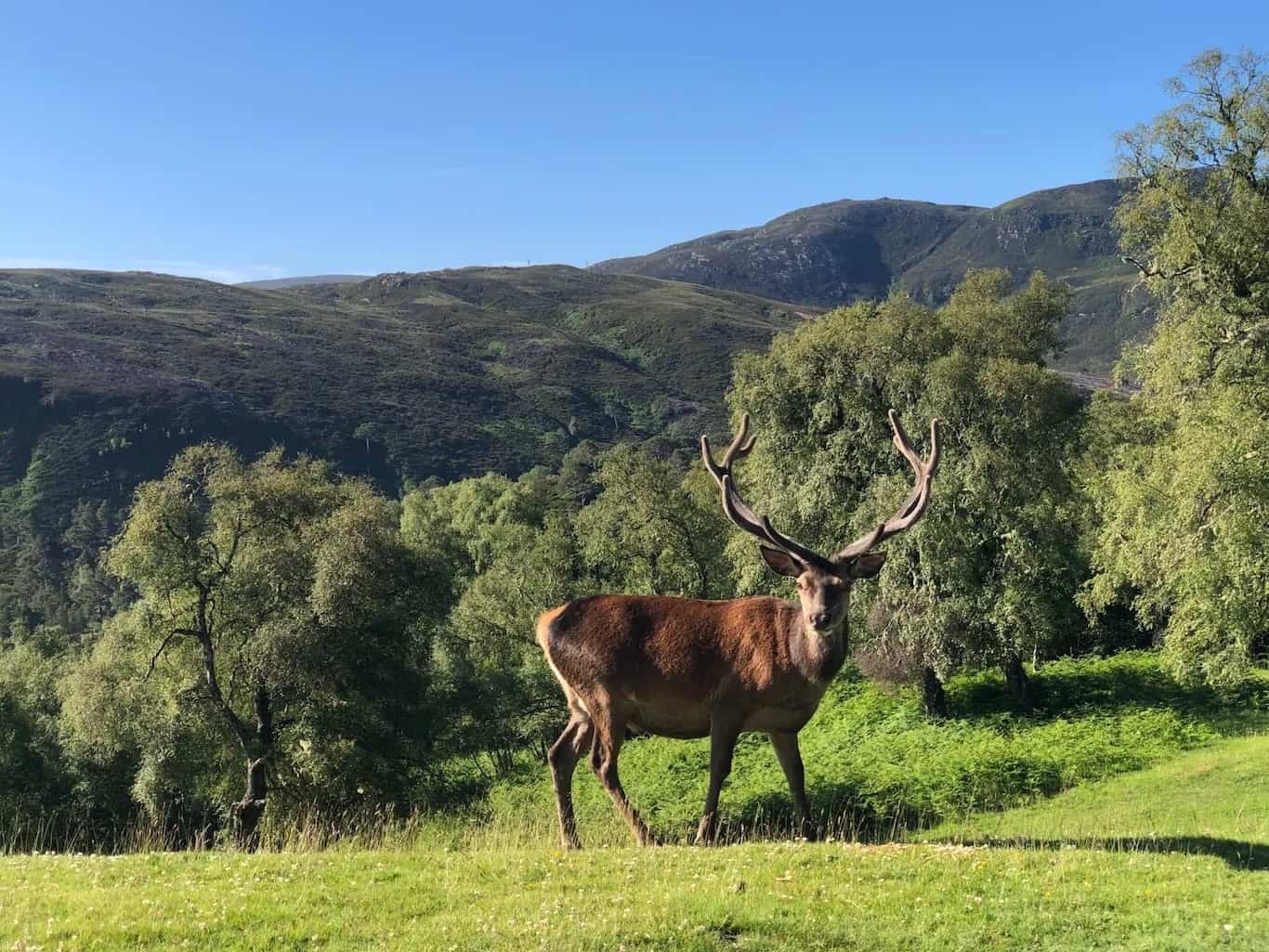
“Soak in the myriad shades of green on a slow walk…and watch stags sauntering by on the grass”
The bigger picture can be hard to comprehend, even for the two men who work everyday to bring it to life.
That picture, slowly coming into focus, is about reversal, revival and legacy, an understanding that Alladale will take decades to change the landscape and be realised by others yet to come.
And yet back at the micro level, each individual visit feels the same – we are moments of splashes in a stream, glimpsing the glen’s past, present and future – the glens feel endless, epic and ancient but we are not insignificant.
The pull of this land has created agency, and I can’t help feeling that the vastness of the reserve, the vast scope of Lister’s bigger picture and the work already realised has reignited something in me.
What else could you want from a Scottish escape in the Highlands?
Book your exclusive stay at or get more information on Alladale Wilderness Reserve here.




